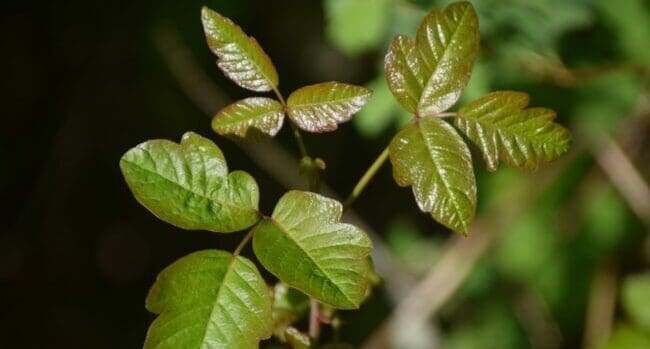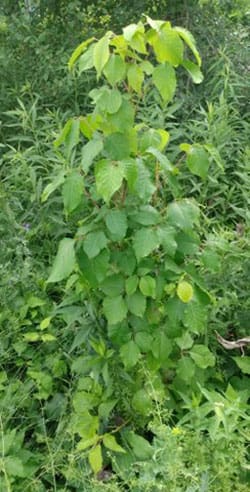 I write this week’s column from a position of grave discomfort, for my careless attitude toward poison ivy has left me blistered and in some agony … sigh!
I write this week’s column from a position of grave discomfort, for my careless attitude toward poison ivy has left me blistered and in some agony … sigh!
I always thought I was immune to this dangerous plant, for I have tromped through it all my life and never even had a glimmer of an impact.
All that changed recently when I was doing some brush trimming at our property after a big wind storm. All around me was poison ivy, but with confidence and in shorts and sneakers, I trimmed away and stacked all the wood I could.
Two days later, I realized my error. An extensive rash arose and has persisted across both legs.
Poison ivy is one of several plants we should be concerned about in our environment – poison oak, poison sumac, giant hogweed and cow parsnip are but a few of the many other plants that have toxic qualities.
Poison ivy has three leaflets and the plants can grow in several forms. It can be a simple single plant with one compound leaf, growing close to the ground, it can grow as a bush 50-cm tall, or as a trailing vine or a tall plant that can climb high into a tree or up a utility pole. All these forms can be found in Canada. Some forms can only be found in southeastern Canada.
They all have the characteristic tri-leaflet shape. One of the best ways to distinguish them is to look at the outer two leaflets – they’re mirror images of each other with one side smooth and the other lightly toothed, while the centre leaflet is toothed along both edges. Colour can vary from pale green in young plants to a shiny dark green later in the season, to a yellow or bright red when the leaf starts to die in the fall.
Many birds seek out the seeds for food in late autumn, while some animals eat the leaves.
But for people, there’s a high likelihood of a rash arising as a result of contact with the plant. Have I mentioned I’m in agony?
Urushiol is a material produced by the plant that causes the impacts we face on exposure. Only seven out of 10 people react and even then to varying degrees.
Obviously, as in my case, things can change over time. But I suspect that my previous exposures were incidental and I had never trampled the plants, releasing high levels of urushiol.
Symptoms vary but always include a rash, clear blistering and a yellowish oozing discharge in the early stages. The rash can take up to a week to develop and will be more or less severe depending on which areas were first impacted and to what degree. The rash can persist for several weeks.
So how do you protect yourself?
- First, don’t do what I did – don’t tromp through this stuff even if you think you’re immune!
- Wear clothing that protects all potentially exposed parts of the body – remember, some forms of the plant climb trees and poles.
- If you’re exposed, change your clothes right away and wash everything thoroughly.
- Monitor the areas you suspect may be infected and keep them clean and dry.
- If you’re infected, the many remedies include trying to dry out the wound using calamine lotion or a similar desiccant.
- Rubbing alcohol may offer relief if used immediately after exposure and, of course, an allergy medication of your choice will help.
- It’s always wise to seek medical attention if you’re exposed to best ensure you treat it effectively and safely.
Don’t be complacent when fall comes or even winter – the smoke from burning poison ivy plants or its dried old leaves can still release sufficient quantities of urushiol to cause an impact.
The only safe way to avoid an impact is to avoid the plant completely. An old saying may help: “leaflets three, let it be.” This may save you a lot of discomfort.
Geoff Carpentier is a published author, expedition guide and environmental consultant. Visit Geoff online at www.avocetnatureservices.com, on LinkedIn and on Facebook.
Geoff is a Troy Media Thought Leader. Why aren’t you?
The views, opinions and positions expressed by columnists and contributors are the author’s alone. They do not inherently or expressly reflect the views, opinions and/or positions of our publication.


